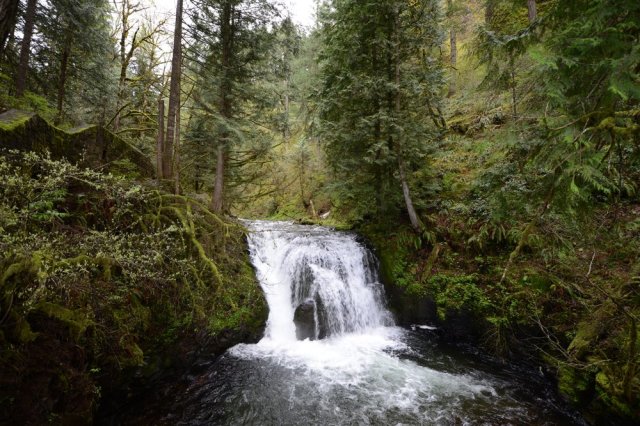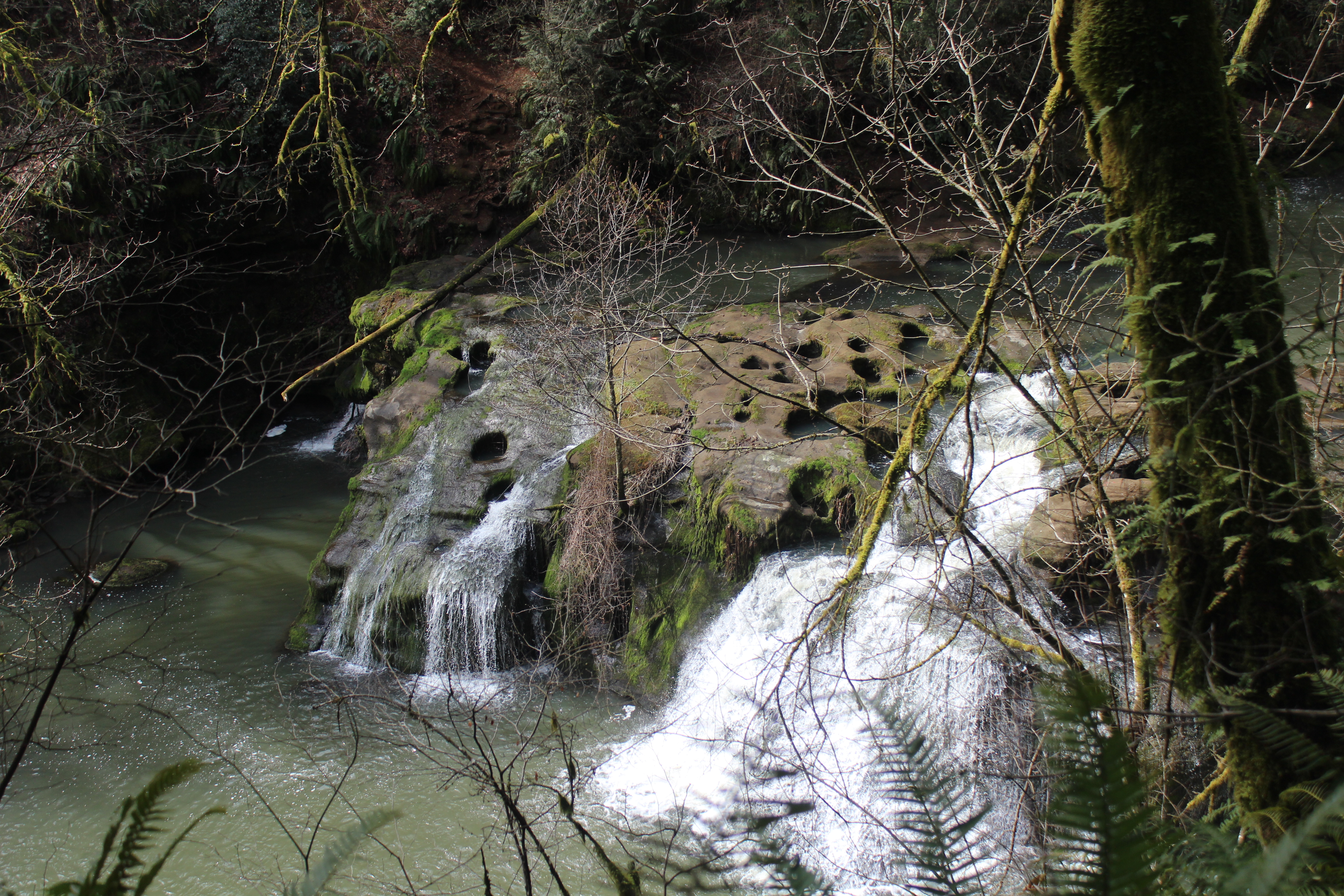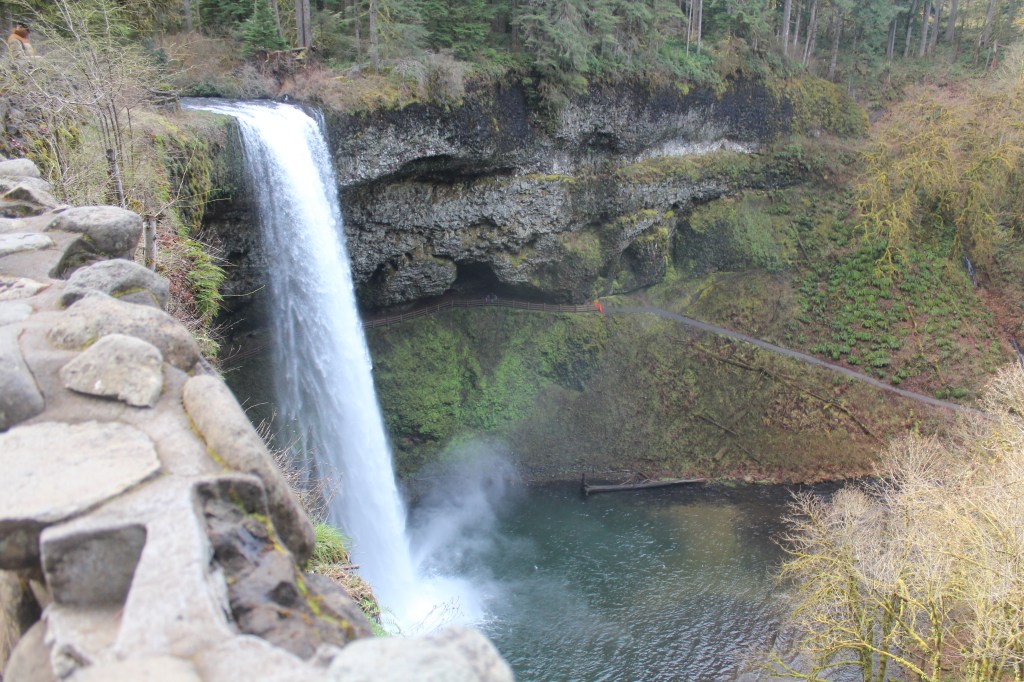There’s no better time to hit the trails than today! During this rainy winter, your crew is in for stunning greenery, soft trails and fresh brisk air. Scroll down to find out which hiking trails offer gorgeous views of the Pacific Ocean, dramatic mountain ranges, raised creeks, city skylines and if you’re lucky—migrating whales. Soak in the views, splash in a few puddles and don’t forget your camera!
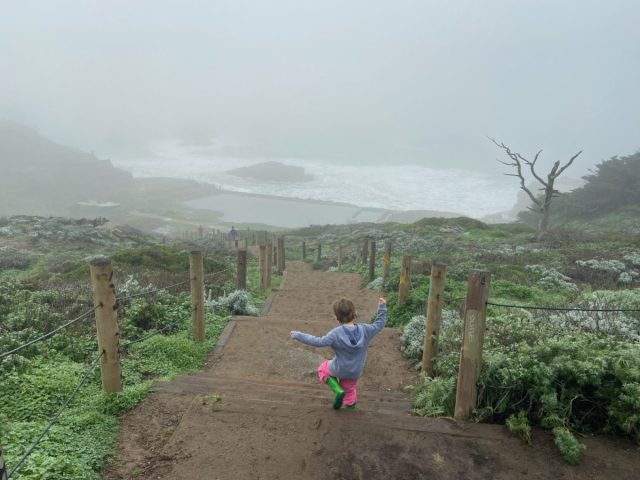
San Francisco
Lands End
We love Lands End any time of year, but it's particularly beautiful (and less crowded) in the winter months. Park in the lots by the visitor's center and explore the nearby trails or head down the staircase towards Sutro Baths. The majority of the Lands End Trail is stroller friendly although there are a few offshoots to spots like the labyrinth that are not. Length: 3.4 mile loop
Crissy Field and the Palace of Fine Arts
The Presidio is a great spot to visit in the winter and we especially love Quartermaster Reach Marsh. This loop trail takes you along Crissy Field with views of the Golden Gate Bridge. Length: 3.9 mile loop
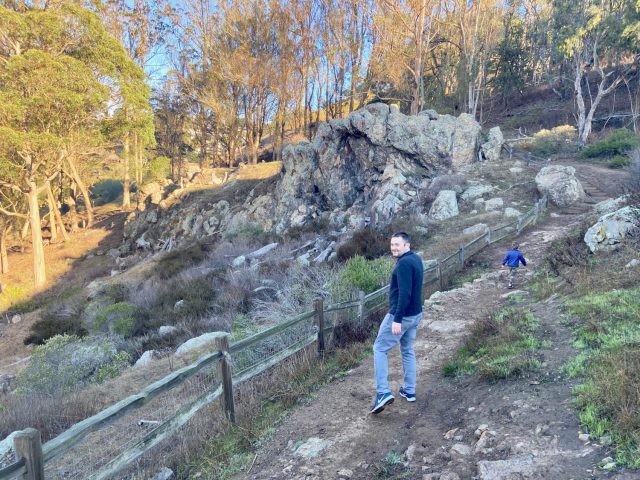
Glen Canyon Park
Dramatic rock formations, staircases, Islais Creek and dirt trails sandwiched between Eucalyptus trees—Glen Canyon offers a 1.8 mile loop enjoyable for the entire family.
Golden Gate Park (Stow Lake and Strawberry Hill)
Take an easy paved stroll around the lake or cross one of the two bridges and explore the dirt path encircling the foot of Strawberry Hill. Walk past Huntington Waterfalls and take a break in the Golden Gate Pavilion. Pick a staircase to climb. Meander your way to the top of Strawberry Hill for beautiful views of San Francisco, the Marin Headlands and the Golden Gate Bridge. When you've walked enough, check out the snack bar for coffee and baked goods (or a burger and a beer!). And if someone in the family isn't in the mood for a hike, rent a paddle boat and cycle the waterways!
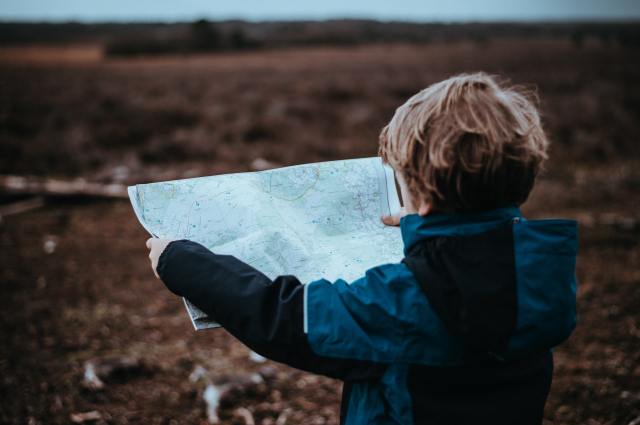
East Bay
Shell Ridge Open Space (Walnut Creek)
Explore one of 6 easy trails ideal for the entire family or challenge your older kiddos to something a little more strenuous. With over 1,420 acres to explore and elevation options ranging from 183 to 1,548 feet, the lower flanks of Mount Diablo has something for everyone.
Sibley Volcano Park (Oakland)
Did you know the Bay Area had a volcano? Sibley Volcanic Regional Preserve, home to many beautiful trails, is also home to the Bay Area's very own volcano! This volcano, Round Top, is about 10 million years old and is the source of all the volcanic rock in the park. While there are lots of trails to choose from, try the Round Top, Volcanic and Skyline Trail Loop for panoramic views and volcanic rock lined trails.
Lafayette Reservoir Loop (Lafayette)
This 3 mile easy loop around the reservoir will delight all ages. And on Tuesday & Thursday afternoon (noon until closing) and Sunday mornings (opening to 11am), kids (and adults!) can ride scooters, rollerblades or roller skates on the paved Lakeside Trail.
Tilden Regional Park (Berkeley)
Nestled in Tilden Regional Park, the beautiful one-mile Wildcat Gorge and Lake Anza loop around Lake Anza is perfect for exploring, bird watching and fishing. Be careful though— this trail is rocky in parts and can be muddy after a rainfall.
Mary Bowerman (Mount Diablo)
For a view like no other, head over to Mount Diablo, just a short drive from Concord. Head up the mountain to the tippy top to check out the visitors center and learn all about the area's Native American history. The word on the street is that if you visit Mount Diablo the day after a winter rain storm you'll be able to see for hundreds of miles. Typical days offer a still-remarkable bird's-eye view above the clouds. Length: 0.8 mile
Ridge Top Loop (Mount Diablo)
This is another fun option that's a little longer. Great views of Walnut Creek and Concord from the top. Length: 2.8 miles
Redwood Regional Park (Oakland)
The ladybugs arrive every fall at Redwood Regional Park and it's a great hike for the kids. Follow the map to the Skyline Gate Staging Area parking lot abd take the Stream Trail about 1.5 miles just past Prince Trail junction and you’ll see a sign on the right. Ladybugs are all there, usually through February. Length: 3.0 miles
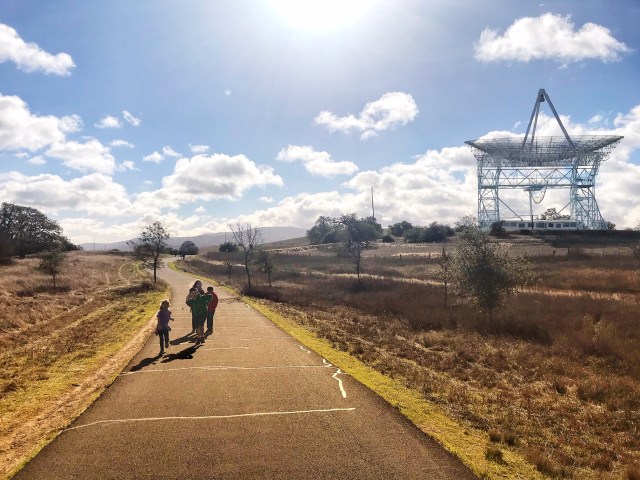
Penisula/South Bay
Mori Point Loop (Pacifica)
We love this spot in the winter when you can look for migrating gray whales offshore. Bonus: most of these trails are stroller-friendly. Some are inclined and bumpy but worth the awesome ocean views. Keep your eyes open for blooming wild flowers, San Francisco Garter snakes and California red-legged frogs. The accessible trail off of Old Mori Rd. has restrooms nearby. Dress in layers as it gets pretty windy. Length: 2.5 miles
Stanford Dish (Palo Alto)
Have you ever seen the famed satellite dish from 280? This gorgeous hike through rolling green hills gets you near it. Park at Junipero Serra Blvd. and Stanford Ave. to start the paved trail. This loop is fully exposed and at times can be really steep. The best time to visit is on the weekdays as the trail gets busy on the weekends. Use the bathroom before you go and carry your water as there are no facilities on site. Length: 3.7 miles
Fremont Older (Saratoga)
This hundreds-of-acres large preserve includes miles of wide, pleasant trails. Enter the park gate at Prospect Road for a view of Silicon Valley, or take the Seven Springs Loop to enjoy the oak groves and search for lizards in the meadow. This trail can be hilly and is popular with bicyclists.
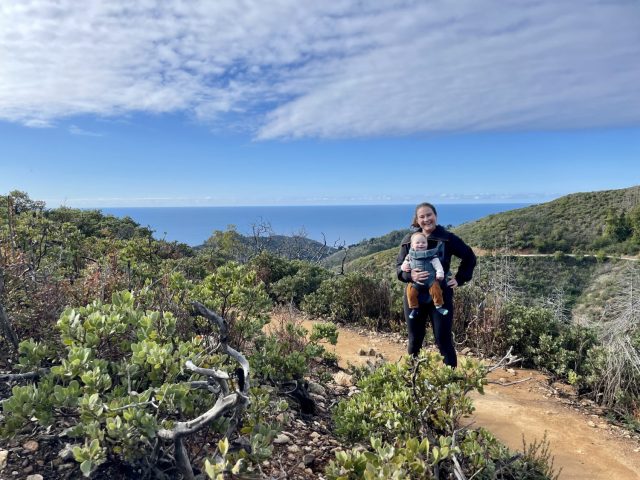
Buzzards Roost (Big Sur)
If you find yourself a little further down the coast, check out the many gorgeous hiking trails in Big Sur like this 2.6 mile loop. Plenty of redwood trees, mountain views, a river and as a reward for the incline—a spectacular view at the top that is especially glorious at sunset. Tip: travel clockwise to make the trip less steep.
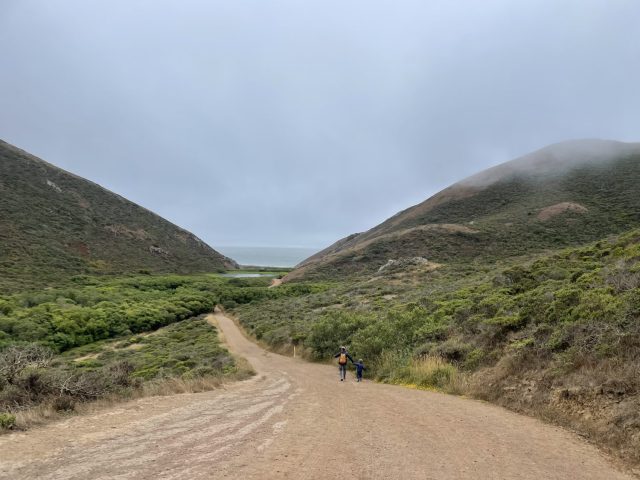
Marin
Batteries Loop (Marin Headlands)
This one-mile loop shows you some history of the area with several Civil War-era batteries that are fun to explore. If you wish, you can walk down the stairs to Rodeo Beach on the water's edge below to add on to your hike. Length: 1 mile
Tomales Bay (Tomales)
We love this option for a winter hike as you start off at a parking lot with plenty of spaces. If you make it all the way to end, you'll be in the marshy part of Tomales Bay Ecological reserve, a cool place to visit any time of year. Kids will love seeing the cows grazing nearby. Length: 2.5 miles
Tennessee Valley (near Mill Valley)
Start at the parking lot near the horse stables then travel down the paved path until you meet the dirt trail. The trail curves along the valley floor and the mountains on either side are that much more colorful in winter. This out and back trail ends at a rocky beach—perfect for a picnic if you happen to be there on a sunny day. For older kids, hike the staircase to the left of the beach to reach the top of the cliffs for breathtaking views up and down the coast!
Phoenix Lake (Ross)
Start from the main parking lot at Lagunitas Road. With lots of twists and turns, bridges and gorgeous views, this 2.8 mile loop is entertaining as it is beautiful and will NOT disappoint!
—Nicole Findlay and Kate Loweth
featured image by Nicole Findlay
RELATED STORIES
35 Amazing Hikes Every Kid Should Take at Least Once
Wheels Up! 7 All-Access Bay Area Hikes with Views
17 Incredible Fall Hikes You Should Do at Least Once









